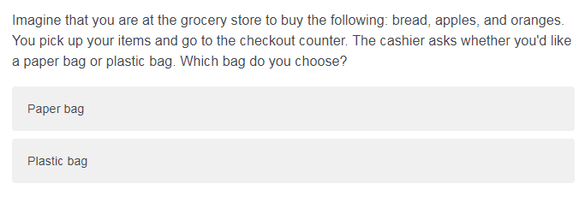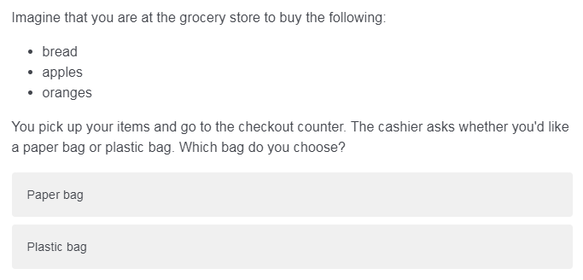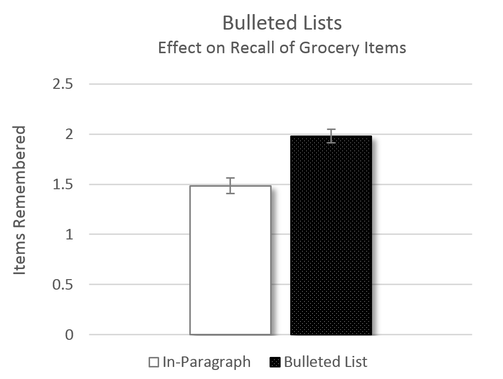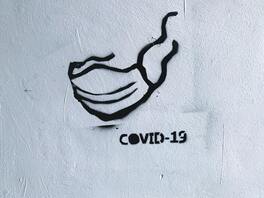Overview
A lot of scientific research has been put toward understanding the human brain. But not much research has been put toward helping us remember our grocery list or getting our co-workers to remember important info from an email. Much of this is because our brains are selective about the information we hold onto, using heuristics (i.e,. mental short-cuts) to efficiently process the world around us (Kahneman, 2011).
Fortunately there are techniques we can use to help us. For example, mnemonic strategies like creating words from the first letters of a list have proven effective for enhancing memory in settings like classrooms (Levin, et al., 1992). But what about when we're communicating to others. It's hard to seem professional when we ask our friends or co-workers to remember meetings with Emily, Greg, Gary, and Stephanie as "EGGS."
One technique already built into most word processing software and email platforms is the bulleted list. Could this simple approach actually help others remember the information we give them? We put this question to the test in another memorable experiment.
The Experiment
We had 400 people from Amazon MTurk participate in a survey experiment, a vignette scenario involving a routine grocery store visit. Participants were told that they were at the store to pick up three items (bread, apples, and oranges), and were asked to choose either a paper bag or plastic bag at checkout. Although participants thought the survey was about their choice of bag, we secretly randomized whether or not the three food items were presented in a bulleted list or within the paragraph (i.e., a randomized controlled trial).
A lot of scientific research has been put toward understanding the human brain. But not much research has been put toward helping us remember our grocery list or getting our co-workers to remember important info from an email. Much of this is because our brains are selective about the information we hold onto, using heuristics (i.e,. mental short-cuts) to efficiently process the world around us (Kahneman, 2011).
Fortunately there are techniques we can use to help us. For example, mnemonic strategies like creating words from the first letters of a list have proven effective for enhancing memory in settings like classrooms (Levin, et al., 1992). But what about when we're communicating to others. It's hard to seem professional when we ask our friends or co-workers to remember meetings with Emily, Greg, Gary, and Stephanie as "EGGS."
One technique already built into most word processing software and email platforms is the bulleted list. Could this simple approach actually help others remember the information we give them? We put this question to the test in another memorable experiment.
The Experiment
We had 400 people from Amazon MTurk participate in a survey experiment, a vignette scenario involving a routine grocery store visit. Participants were told that they were at the store to pick up three items (bread, apples, and oranges), and were asked to choose either a paper bag or plastic bag at checkout. Although participants thought the survey was about their choice of bag, we secretly randomized whether or not the three food items were presented in a bulleted list or within the paragraph (i.e., a randomized controlled trial).
After answering the bag question, participants responded to 3-4 minutes of additional survey questions unrelated to this experiment. Finally, at the end of the survey we asked participants to input as many of the three items as they remember. We asked participants:
"Think back to the grocery store scenario where the cashier asked you whether you wanted a paper bag or plastic bag. You were at the grocery store to pick up 3 items. What were those 3 items?"
Results
We found that bulleted lists actually helped our participants remember. Participants recalled 33.4% more items in the bullet point condition (average = 1.98) than the control condition (average = 1.48), (p < 0.001). Furthermore, respondents in the bullet point condition were significantly more likely to remember all three items (p = 0.009), with 34.5% of respondents who saw bullet points remembering all three list items relative to only 22.7% who did not. There were no significant interactions with gender or age, nor did bullet points affect grocery bag choice. And in case you’re curious, respondents preferred paper bags over plastic bags (68.2% vs. 31.8%).
"Think back to the grocery store scenario where the cashier asked you whether you wanted a paper bag or plastic bag. You were at the grocery store to pick up 3 items. What were those 3 items?"
Results
We found that bulleted lists actually helped our participants remember. Participants recalled 33.4% more items in the bullet point condition (average = 1.98) than the control condition (average = 1.48), (p < 0.001). Furthermore, respondents in the bullet point condition were significantly more likely to remember all three items (p = 0.009), with 34.5% of respondents who saw bullet points remembering all three list items relative to only 22.7% who did not. There were no significant interactions with gender or age, nor did bullet points affect grocery bag choice. And in case you’re curious, respondents preferred paper bags over plastic bags (68.2% vs. 31.8%).
Conclusion
If you're trying to help others remember important information:
It's still an open question whether this effect is driven by memory enhancement or simply attention shifting. And we'll need more research to see if this technique is also helpful for longer lists. But at this point we can reasonably assume that for shorter lists, bullets help.
References
Kahneman, D. (2011). Thinking, Fast and Slow. New York: Farrar, Straus and Giroux.
Levin, J. R.; Levin, M. E.; Glasman, L. D.; Nordwall, M. B. (1992). "Mnemonic vocabulary instruction: Additional effectiveness evidence". Contemporary Educational Psychology. 17(2): 156–174.
If you're trying to help others remember important information:
- Use a bulleted list.
It's still an open question whether this effect is driven by memory enhancement or simply attention shifting. And we'll need more research to see if this technique is also helpful for longer lists. But at this point we can reasonably assume that for shorter lists, bullets help.
References
Kahneman, D. (2011). Thinking, Fast and Slow. New York: Farrar, Straus and Giroux.
Levin, J. R.; Levin, M. E.; Glasman, L. D.; Nordwall, M. B. (1992). "Mnemonic vocabulary instruction: Additional effectiveness evidence". Contemporary Educational Psychology. 17(2): 156–174.
Methods Note
We used ordinary least squares (OLS) regression analyses to test for significant differences in list items remembered between the bullet list and no-bullet list conditions. For significant differences, the difference between the two groups' averages would be large and its corresponding “p-value” would be small. If the p-value is less than 0.05, we consider the difference statistically significant, meaning we'd likely find a similar effect if we ran the study again with this population. To test whether differences for specific groups differ significantly from their counterparts (e.g., older vs. younger), we used OLS regression analyses with interaction terms.
The survey materials and data for this experiment are available on our page on the Open Science Framework.
Methods Note
We used ordinary least squares (OLS) regression analyses to test for significant differences in list items remembered between the bullet list and no-bullet list conditions. For significant differences, the difference between the two groups' averages would be large and its corresponding “p-value” would be small. If the p-value is less than 0.05, we consider the difference statistically significant, meaning we'd likely find a similar effect if we ran the study again with this population. To test whether differences for specific groups differ significantly from their counterparts (e.g., older vs. younger), we used OLS regression analyses with interaction terms.
The survey materials and data for this experiment are available on our page on the Open Science Framework.
Popular Experiments
COVID MasksDoes wearing a COVID mask affect how others think of you?
|
Video GamesAre video games more enjoyable than board games?
Does age or gender matter? |
Zero-Sum PoliticsDo Democrats or Republicans view society as win-lose?
|







